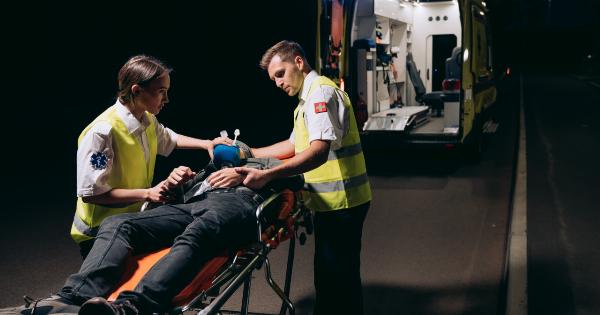Leg traffic problems can often be a source of annoyance and discomfort for individuals of all ages.
Whether you experience occasional leg pain or deal with more chronic issues, understanding the possible causes is crucial for finding appropriate solutions and seeking medical intervention if needed. In this visual guide, we will explore 15 common reasons behind leg traffic problems.
1. Muscle Cramps
One of the most frequent causes of leg pain and traffic problems is muscle cramps. These sudden, involuntary contractions can occur due to dehydration, electrolyte imbalances, muscle fatigue, or inadequate stretching.
Stretching exercises and hydration can help alleviate muscle cramps.
2. Poor Blood Circulation
Inadequate blood flow to the legs can cause traffic problems such as swelling, cramping, and fatigue. Conditions like peripheral artery disease (PAD), blood clots, and varicose veins can contribute to poor circulation.
Lifestyle changes, compression stockings, and medication can improve blood flow.
3. Nerve Compression
Nerves in the legs can experience compression due to various conditions like herniated disc, sciatica, or peripheral neuropathy. Nerve compression often causes pain, numbness, and mobility issues in the legs.
Treatment options depend on the underlying cause and range from physical therapy to surgery.
4. Muscle Strains
Overexertion or sudden, forceful movements can lead to muscle strains in the legs. This can manifest as pain, swelling, and difficulty with movement.
Rest, ice, compression, and elevation (RICE) therapy, along with gentle stretching and gradual return to activity, can aid in the healing process.
5. Shin Splints
Shin splints typically occur in athletes or individuals engaging in repetitive, high-impact activities. These activities put stress on the muscles and bones, leading to inflammation and pain in the lower leg.
Rest, icing the affected area, and shoe inserts can help alleviate shin splint symptoms.
6. Sprains and Ligament Injuries
Twisting or overstretching the ligaments can result in sprains or ligament injuries. Ankle sprains are particularly common. Pain, swelling, and instability are typical symptoms.
Rest, ice, compression, and physical therapy are often recommended for recovery and rehabilitation.
7. Osteoarthritis
Osteoarthritis, a degenerative joint disease, can affect the knees and hips, leading to leg traffic issues like pain, stiffness, and reduced mobility.
Medications, physical therapy, assistive devices, and lifestyle modifications can manage symptoms and improve quality of life.
8. Stress Fractures
Stress fractures occur due to repetitive pressure or overuse, commonly seen in athletes. These small cracks in the bones cause pain, tenderness, and sometimes swelling.
Rest, immobilization, and weight-bearing modifications are crucial for healing stress fractures.
9. Deep Vein Thrombosis (DVT)
DVT refers to the formation of blood clots in deep veins, often occurring in the legs. This condition requires immediate medical attention as it can lead to serious health complications, including pulmonary embolism.
Treatment involves blood thinners and compression stockings.
10. Muscle Atrophy
Leg traffic problems can also arise from muscle atrophy, which is the loss of muscle mass and strength. Inactivity, prolonged bed rest, or certain medical conditions can contribute to muscle wasting.
Physical therapy, exercise, and nutrition are essential for managing and preventing muscle atrophy.
11. Cellulitis
Cellulitis is a bacterial infection that affects the skin and underlying tissues. It can cause redness, warmth, pain, and swelling in the affected area, including the legs.
Prompt medical treatment with antibiotics is necessary to prevent complications and control the infection.
12. Overweight/Obesity
Excess weight puts additional stress on the legs, contributing to leg traffic problems. Obesity can exacerbate conditions like osteoarthritis and poor circulation.
Weight loss through a combination of diet and exercise is crucial for reducing the burden on the legs and improving overall health.
13. Diabetes
Diabetes can significantly impact the legs, causing issues such as neuropathy, poor circulation, and slow wound healing.
Proper blood sugar management, foot care, and regular check-ups can help prevent and manage leg traffic problems in individuals with diabetes.
14. Peripheral Neuropathy
Peripheral neuropathy refers to nerve damage, often resulting from conditions like diabetes, vitamin deficiencies, or autoimmune disorders. Numbness, tingling, and weakness in the legs are common symptoms.
Treatment involves addressing the underlying cause and managing pain and discomfort.
15. Restless Leg Syndrome (RLS)
Restless Leg Syndrome is characterized by an irresistible urge to move the legs while at rest or during sleep. This condition can disrupt sleep and cause discomfort. Medications, lifestyle changes, and relaxation techniques can help manage RLS symptoms.





























